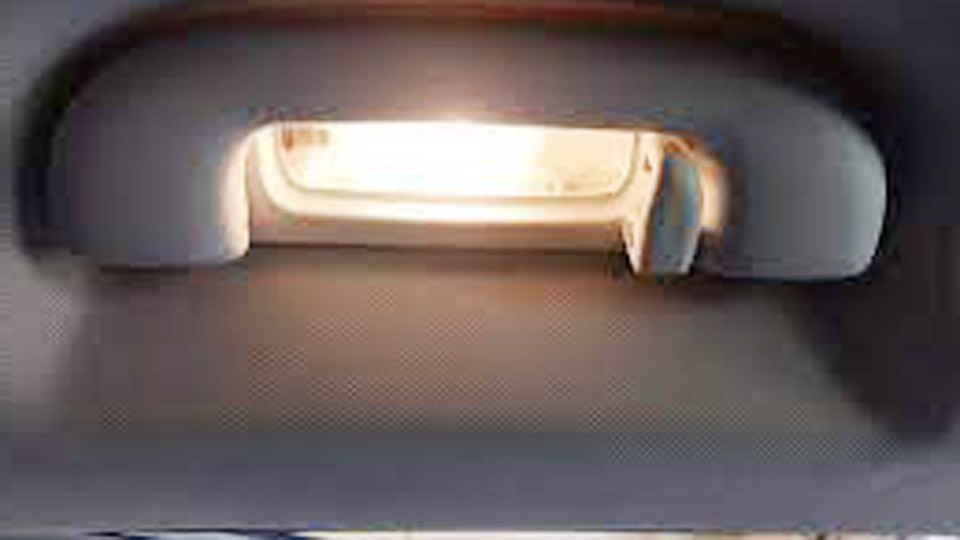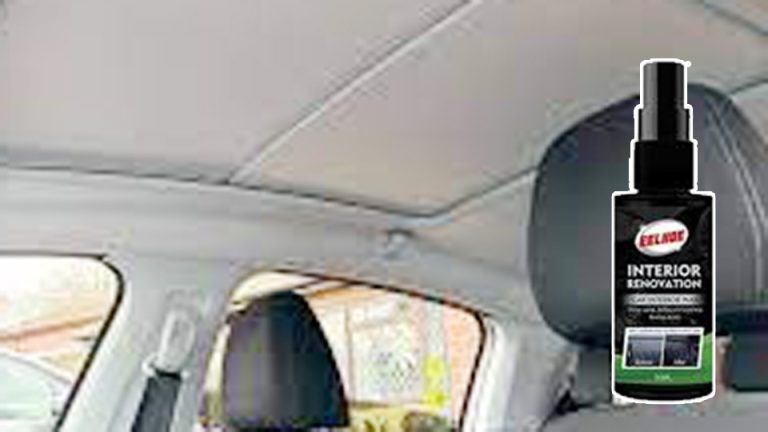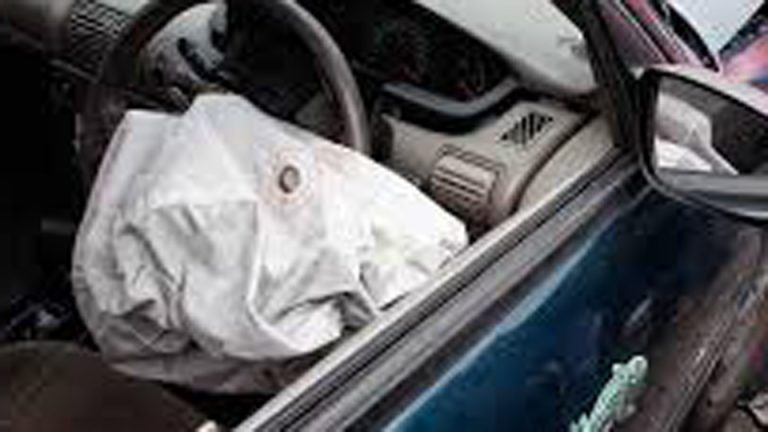I’ll never forget the night I hopped into my old Honda Civic, expecting the interior lights to flick on as I opened the door, only to be greeted by darkness. It was disorienting, fumbling for my keys in the pitch-black cabin. Why are my car interior lights not turning on automatically? I wondered, feeling a mix of frustration and curiosity.
If you’ve ever faced this issue, you know how annoying it can be—those lights are supposed to make life easier, not leave you in the dark. Let’s figure this out together, like we’re sitting in my driveway, troubleshooting your car with a flashlight in hand.
I’ve dealt with this problem in my Civic, my newer SUV, and even a friend’s pickup. From burnt-out bulbs to quirky electrical issues, I’ve learned the common causes and fixes through trial and error. This guide is packed with my personal experiences, practical tips, and straightforward steps to help you get your car’s interior lights working again.

Image by jeeprenegadeforum
Understanding How Car Interior Lights Work
Before we dive into why your interior lights aren’t turning on automatically, let’s talk about how they’re supposed to work. Most modern cars have dome lights, map lights, or courtesy lights that activate when you open a door, unlock the car, or turn off the ignition.
These lights are controlled by a combination of switches, sensors, and wiring tied to your car’s electrical system. In my Civic, the dome light would come on as soon as I pulled the door handle, thanks to a door jamb switch that signals the system.
When the lights don’t turn on automatically, something’s interrupting that signal or power flow. It could be a simple fix, like a flipped switch, or something trickier, like a wiring issue. Let’s explore the most common culprits, based on what I’ve seen in my own cars.
Common Reasons Your Interior Lights Aren’t Working
When my SUV’s lights stopped working last year, I went through a mental checklist of possible causes. Over time, I’ve narrowed it down to a few key issues that are likely causing your interior lights to stay off. Here’s what I’ve learned, starting with the simplest fixes.
The Light Switch Is Set to “Off” or “Manual”
This one’s a classic—and a bit embarrassing. The first time my Civic’s lights didn’t turn on, I spent 20 minutes panicking before realizing I’d accidentally turned the dome light switch to “off.” Most cars have a switch on or near the light fixture with three settings: “on,” “off,” and “door” (or automatic). If it’s set to “off,” the lights won’t come on, no matter what you do.
Check the switch on your dome light or dashboard. In my SUV, it’s a small toggle on the overhead console. Flip it to “door” or “auto” and test by opening the door. This simple fix saved me a trip to the mechanic more than once.
Burnt-Out Bulbs – Car Interior Lights
If the switch is set correctly but the lights still don’t work, the bulb might be burnt out. I ran into this with my pickup’s map lights after years of heavy use. Interior bulbs, like any light, have a limited lifespan and can fail over time. If one light works but another doesn’t, it’s likely a single burnt-out bulb.
To check, remove the light cover (usually by gently prying with a flathead screwdriver) and inspect the bulb. If it’s blackened or the filament is broken, it’s time to replace it. I keep spare bulbs in my glovebox—cheap insurance for moments like this.
Blown Fuse – Car Interior Lights
A blown fuse was the culprit when my SUV’s entire interior lighting system went dark. Fuses protect your car’s electrical circuits, and if one blows, it can cut power to the lights. I found this out after checking my owner’s manual and locating the fuse box under the dashboard.
Grab your car’s manual to find the fuse box location and the specific fuse for interior lights. Pull it out with a fuse puller (or tweezers) and check if the metal strip inside is broken. Replacing a fuse is cheap and easy—I fixed mine for less than a dollar.
Faulty Door Jamb Switch – Car Interior Lights
The door jamb switch is a small button or sensor in your door frame that tells the car when a door is open. If it’s stuck or broken, the lights won’t know to turn on. This happened in my Civic after years of wear and tear. The switch was gummed up with dirt, and cleaning it fixed the issue.
To test, open each door and listen for a click from the switch (usually near the door hinge). If it’s silent or feels stuck, spray it with electrical contact cleaner and work it back and forth. If that doesn’t work, you may need to replace it.
Wiring or Electrical Issues – Car Interior Lights
Sometimes, the problem is deeper in the electrical system, like a loose wire or a faulty control module. I helped a friend troubleshoot this in his truck when the lights wouldn’t turn on, even after checking the bulbs and fuses. We traced it to a loose connection in the wiring harness under the dashboard.
This one’s trickier and often requires a mechanic’s expertise. If you’re comfortable, check for loose wires near the light fixture or fuse box. Otherwise, it’s worth a trip to the shop to avoid messing with complex wiring.
Battery or Alternator Problems – Car Interior Lights
If your car’s battery is weak or the alternator isn’t charging properly, it can affect low-power systems like interior lights. I noticed this in my Civic during a cold winter when the battery was struggling. The lights were dim and wouldn’t turn on automatically until I replaced the battery.
Check if other electrical components, like the radio or power windows, are acting sluggish. A quick test with a multimeter or a trip to an auto parts store for a battery check can confirm this.
Diagnosing the Problem: My Step-by-Step Approach
When my interior lights go out, I approach it like a detective, starting with the easiest fixes. Here’s how I troubleshoot, based on years of dealing with this issue. Grab a flashlight, and let’s walk through it together.
Check the Light Switch – Car Interior Lights
Start by checking the dome light switch. Is it set to “door” or “auto”? I’ve made the mistake of assuming it’s fine, only to find my kids flipped it to “off” while playing in the car. Test by toggling the switch and opening a door. If the lights come on, you’re done!
Inspect the Bulbs – Car Interior Lights
If the switch is correct, pop off the light cover and check the bulb. Look for a darkened bulb or a broken filament. I keep a spare bulb handy and swap it out to test. If the new bulb works, you’ve found the problem. If not, move to the next step.
Test the Fuses -Car Interior Lights
Find your car’s fuse box (check the owner’s manual) and locate the interior light fuse. Pull it out and inspect it. A blown fuse will have a broken metal strip. I replaced a blown fuse in my SUV in five minutes, and the lights were back on. Keep spare fuses in your car for quick fixes.
Examine the Door Switches – Car Interior Lights
Open each door and locate the door jamb switch. Press it manually to see if it clicks or feels stuck. I fixed a sticky switch in my Civic with a quick spray of contact cleaner. If the switch is broken, you’ll need to replace it—a simple job for most DIYers.
Look for Electrical Issues – Car Interior Lights
If the above steps don’t work, check for loose wires near the light fixture or fuse box. I found a loose connection in my friend’s truck by gently wiggling the wires. If you’re not comfortable with electrical work, this is where a mechanic comes in.
Test the Battery – Car Interior Lights
If your lights are dim or inconsistent, test the battery. I used a multimeter to check my Civic’s battery voltage—it was below 12 volts, a sign it was failing. Most auto parts stores will test your battery for free.
Fixing the Issue: Practical Solutions
Once you’ve pinpointed the cause, it’s time to fix it. Here’s how I’ve tackled each issue, with tips to make the process easier.
Reset the Light Switch – Car Interior Lights
If the switch was set to “off,” flip it to “door” or “auto.” Test by opening and closing the doors. This fixed my Civic’s lights in seconds and saved me a lot of head-scratching.
Replace Burnt-Out Bulbs – Car Interior Lights
Buy replacement bulbs that match your car’s make and model (check the owner’s manual). Remove the light cover, swap out the old bulb, and test. I replaced my pickup’s map light bulb in under five minutes, and it worked perfectly.
Swap Out a Blown Fuse – Car Interior Lights
Get a replacement fuse with the same amperage rating (usually printed on the fuse). Pop it into the fuse box slot and test the lights. I keep a pack of assorted fuses in my glovebox for emergencies like this.
Clean or Replace the Door Jamb Switch
Spray electrical contact cleaner on a sticky switch and work it back and forth. If it’s broken, replace it with a new one from an auto parts store. I fixed my Civic’s switch with cleaner, but my friend’s truck needed a $10 replacement part.
Address Wiring Issues – Car Interior Lights
For loose wires, secure them with electrical tape or a connector. I tightened a loose wire in my friend’s truck, and the lights came back on. Complex wiring issues, like a faulty control module, are best left to a mechanic.
Fix Battery Problems -Car Interior Lights
If the battery is weak, charge it or replace it. I had my Civic’s battery tested at an auto shop, and a new one solved the issue. If the alternator is the problem, a mechanic can confirm and replace it.
A Quick Troubleshooting Checklist – Car Interior Lights
Here’s a checklist I use when my interior lights act up. It’s based on my own experiences and helps me stay organized:
| Issue | Signs | Fix |
|---|---|---|
| Light Switch Off | Lights don’t turn on automatically | Set switch to “door” or “auto” |
| Burnt-Out Bulb | One or more lights don’t work | Replace bulb |
| Blown Fuse | All interior lights out | Replace fuse |
| Faulty Door Switch | Lights don’t respond to door opening | Clean or replace switch |
| Wiring Issue | Intermittent or no light function | Secure wires or visit mechanic |
| Weak Battery/Alternator | Dim lights, other electrical issues | Test and replace battery |
This table is my go-to for quick troubleshooting. Keep it handy for your next light issue!
Preventing Interior Light Problems
Fixing the lights is great, but preventing issues is even better. Here are my habits for keeping my car’s interior lights reliable.
Check Switches Regularly – Car Interior Lights
Every few months, make sure the dome light switch is set to “auto.” I check mine when I clean the car—it’s a quick way to avoid surprises.
Replace Bulbs Proactively – Car Interior Lights
If one bulb burns out, consider replacing all interior bulbs at once. They tend to fail around the same time. I did this in my SUV, and it saved me from repeated fixes.
Inspect Fuses During Maintenance – Car Interior Lights
When you check your oil or tires, peek at the fuse box. I keep a fuse puller in my toolkit to make this easy. Catching a blown fuse early prevents bigger issues.
Clean Door Switches
Spray door jamb switches with contact cleaner every year to prevent sticking. I do this as part of my spring car maintenance, and it keeps the switches working smoothly.
Maintain Your Battery – Car Interior Lights
Test your battery annually, especially before winter. I had my SUV’s battery tested at an auto shop, and it caught a weak cell before it caused problems.
Light Up Your Car Again
When your car’s interior lights don’t turn on automatically, it’s more than just an inconvenience—it’s a signal something needs attention. Whether it’s a flipped switch, a burnt-out bulb, or a deeper electrical issue, you now have the tools to diagnose and fix the problem. I’ve been fumbling in the dark in my Civic or scratching my head over my SUV’s lights. Each time, I learned something new about keeping my car’s systems in check.
Don’t let the darkness stress you out. Start with the simple fixes—check the switch, inspect the bulb, test the fuse—and work your way up. If you’re stumped, a trusted mechanic can help. Grab a flashlight, pop open your owner’s manual, and get those lights shining again. Your car will feel welcoming once more, and you’ll drive with confidence knowing you tackled the issue yourself.
Common Questions About Car Interior Lights Not Working
Why don’t my car’s interior lights come on when I open the door?
The light switch might be set to “off,” or you could have a burnt-out bulb, blown fuse, or faulty door switch. Check the switch first, then inspect the bulb and fuse.
Can a dead battery cause interior lights to stop working?
Yes, a weak battery or failing alternator can reduce power to interior lights, causing them to dim or not work. Test the battery to confirm.
How do I know if my car’s interior light bulb is burnt out?
Remove the light cover and check if the bulb is blackened or has a broken filament. Replacing it with a matching bulb will confirm if it’s the issue.
What do I do if my car’s door switch is broken?
Clean the door jamb switch with electrical contact cleaner. If it’s still not working, replace it with a new one that matches your car’s make and model.
Why do my interior lights work sometimes but not always?
Intermittent issues could stem from a loose wire, sticky door switch, or weak battery. Check connections and clean switches, or have a mechanic inspect the wiring.
Is it expensive to fix interior lights that don’t turn on?
Most fixes, like replacing a bulb or fuse, are cheap and easy. Wiring or alternator issues may cost more, but checking the simple stuff first can save you money.




